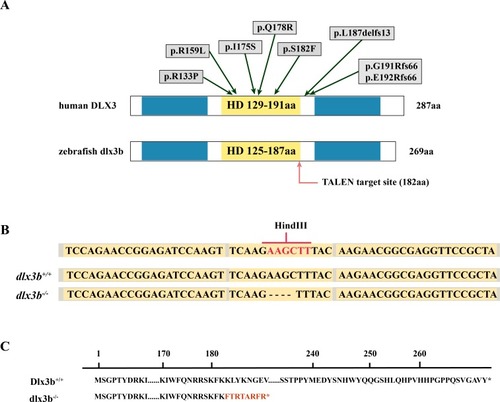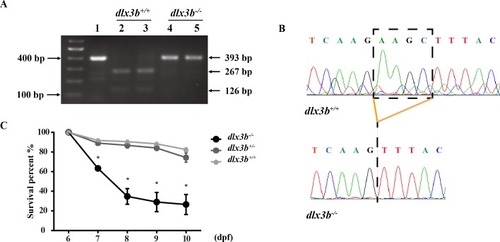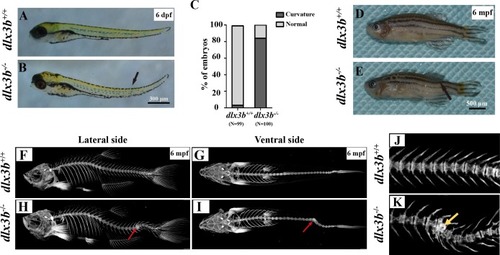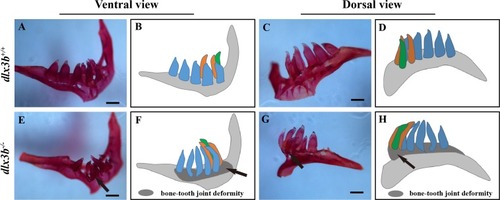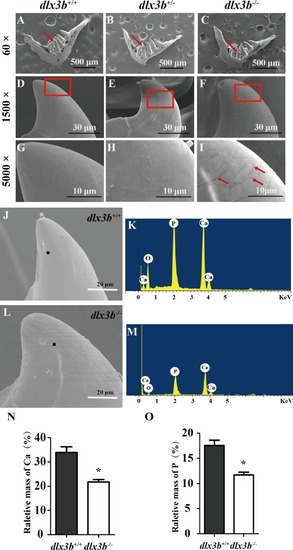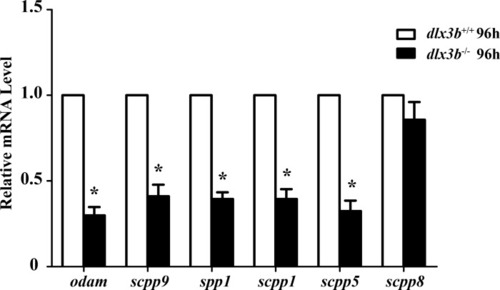- Title
-
Mutant dlx3b disturbs normal tooth mineralization and bone formation in zebrafish
- Authors
- Pang, L., Zhang, Z., Shen, Y., Cheng, Z., Gao, X., Zhang, B., Wang, X., Tian, H.
- Source
- Full text @ Peer J.
|
(A) Structure of the |
|
(A) Genotyping results identifying homozygote ( |
|
(A–B) Body curvature of 6–7 dpf larvae under a stereomicroscope. The body curvature in |
|
Compared with the pharyngeal teeth of the wild-type (A, C), those of the mutant group exhibited abnormal bending towards the dorsal side (E, G) with the abnormal bone growth of the pharyngeal bone at the bone-tooth joint (E, G, black arrow). (A–D) The pharyngeal dentition of the wild-type sibling; (E–H) the pharyngeal dentition of the PHENOTYPE:
|
|
(A–I) SEM images showing the surface of the second pharyngeal tooth. The red arrows showed the teeth we studies below in a 60× image (A–C). The fourth ventral pharyngeal teeth (red arrows in A–C) was magnified as images D–F. The red rectangle areas in D–F were then magnified as G–I. The red arrows (I) indicate the pits on the surface of the second ventral pharyngeal tooth of the PHENOTYPE:
|
|
Real-time RT-PCR was used to determine the expression levels of mineralized-related genes using RNA samples extracted from zebrafish larvae at 96 hpf. The expression level of |

Unillustrated author statements |

